Market Trends: PWCs boost the boating industry
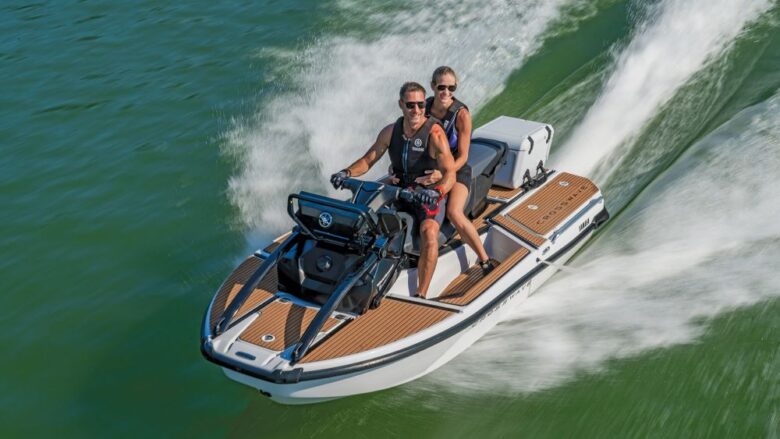
This article was originally featured in the September issue of Boating Industry.
After several years of pandemic-fueled highs, the personal watercraft (PWC) market continues to evolve as consumers are prioritizing time outdoors, shared experiences, and affordable entry points into boating.
Boating Industry spoke with Yamaha and Sea-Doo to learn how new buyers, product innovations and shifting generational expectations are driving the segment.
From entry-level to luxury
PWCs have long served as an accessible entrance to boating. Bryan Seti, general manager of Yamaha WaterCraft, shared that the company has a first-time buyer rate of 45 percent in the PWC segment. Yamaha’s entry-level model, part of its JetBlaster series, starts at $8,499.
Sea-Doo’s entry-level PWCs are also performing well, according to James Heintz, director of global product strategy, with a starting price of $6,999.
Heintz shared that PWCs generate almost triple the number of new entrants compared to the aluminum and pontoon boat segments. The segment is attractive because, compared to boats, PWCs require a smaller vehicle to be towed, they are easier to store and maintain, and they are more affordable.
“Barriers are reduced, and we are driving a lot of people out on the water,” Heintz said. “We see a lot of those customers go on to be interested in boats.”
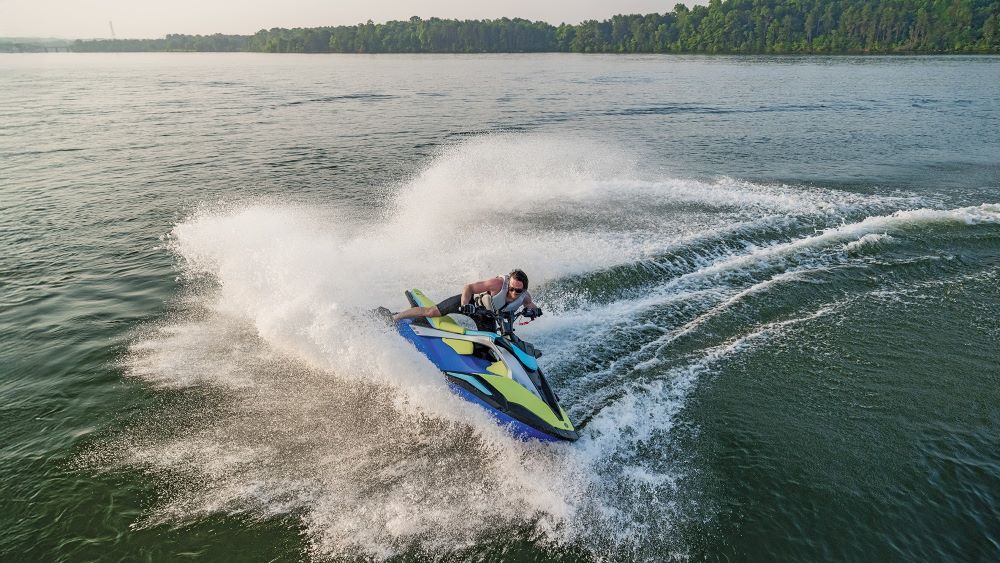
At the same time, the luxury and touring categories are also performing well.
“The high-end stuff has been really consistent for us,” Seti said. “It’s got all the technology, it’s a little larger, a little more stable, so it’s probably a product where people are buying their second or third WaveRunner.”
“[Riders] want more comfort, they want more storage, they’re riding in groups, and sometimes they’re doing multi-day trips and camping in between or stopping at waterfront hotels,” Heintz echoed. “I think that touring mentality has definitely started to take off.”
Riding in groups and staying connected
According to Sea-Doo research, group riding is becoming increasingly popular. Riders are joining family members, friends, or social communities for destination rides.
“When you ride in a group, staying connected with your group is essential to having a good day out on the water,” Heintz said. PWC users also like to consult the map, send and receive texts and calls, and control their music.
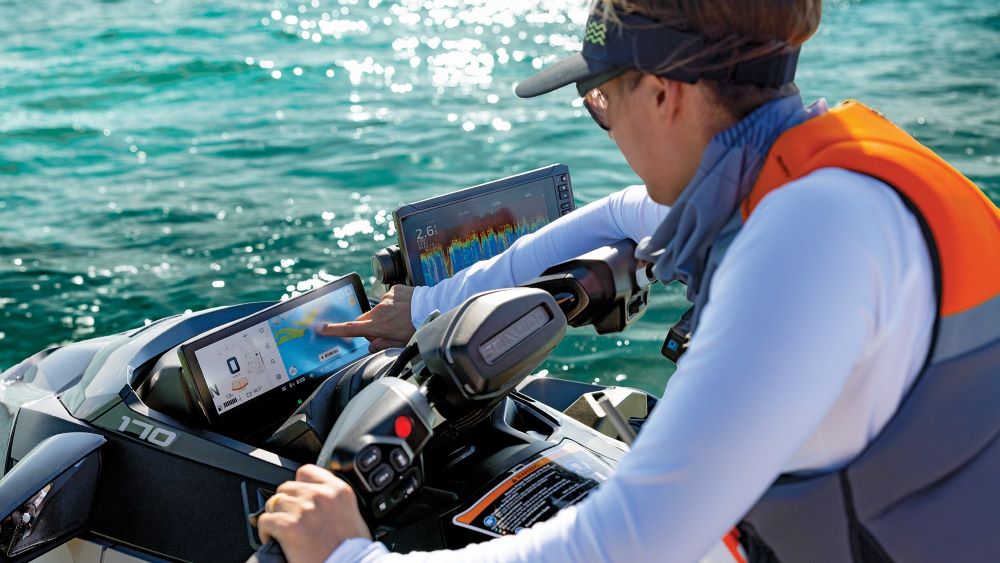
“Close to 60 percent of our riders are stating that they’re taking their phone out every five minutes during a ride to do something,” Heintz explained. “We’re all about trying to help our customers disconnect from daily life and feel that sense of freedom you get when you’re on the water, so the fact that they’re taking their phone out that often is interrupting the experience.”
As a response, some of Sea-Doo’s most recent features are designed to enhance group riding and allow riders to perform certain tasks on their phone through the PWC touchscreen display and handlebars.
Doing more on the water
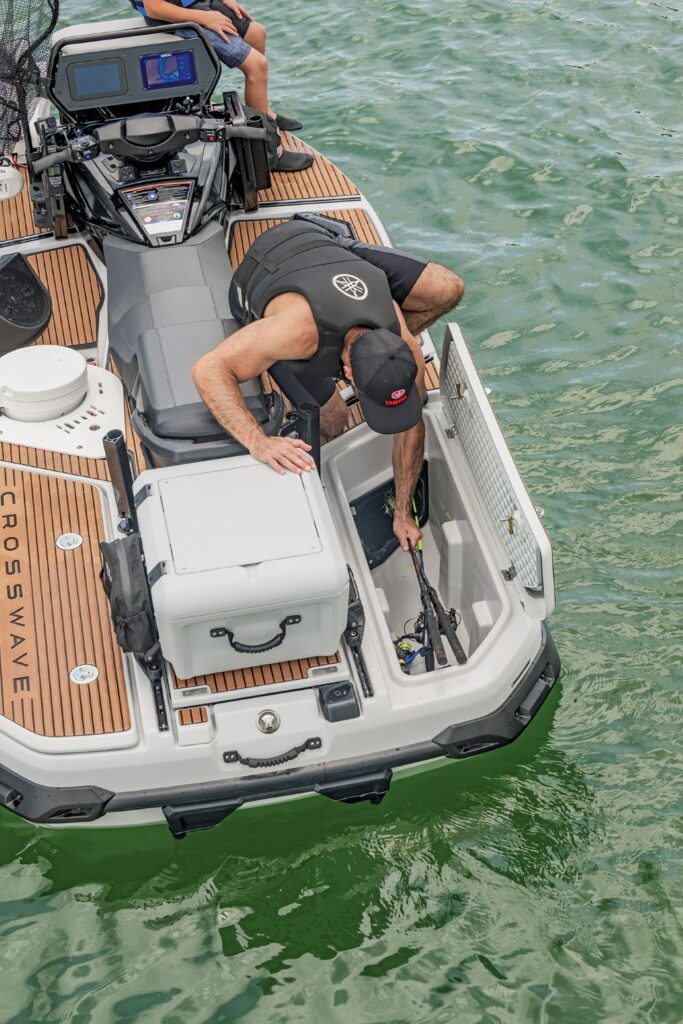
Yamaha’s latest product is the 2026 CrossWave, a 13-foot PWC designed to carry four people. Riders can walk completely around the craft, intentionally blurring the line between PWC and boat.
“There are so many things you can do with it and it’s so easy to maneuver, so whether it’s fishing or going on long touring rides or just going to the sandbar, it’s very customizable,” Seti explained.
With a larger fuel tank, ample storage space, and the option to add coolers, trolling motors and rod holders, the product is a clear response to the growing touring and fishing trends in the PWC segment.
“We learned on the boat side that people want versatility,” Seti continued. “People are not looking to do just one thing on the water.”
Sea-Doo sees similar trends and as the first OEM to introduce a fishing-focused PWC, the company is continuing to invest in that segment. “Fishing on a personal watercraft is a relatively new activity in the North American market,” Heintz said. “If you look at a market like New Zealand, they’ve been doing it for a decade and we’re seeing close to half of our sales in New Zealand are personal watercrafts that are equipped for fishing.”
He expects the North American market to continue to mature as well, and explained the importance of salespeople who are excited and knowledgeable about both fishing and PWCs.
“There’s definitely a recipe that needs to be applied at the grassroots level that we’re going to be helping our dealers with that over the next few years,” he said, “but I believe we’ve just scratched the surface of the potential in that category.”
He noted that aluminum fishing boats are one of the only segments to grow since Covid-19, and kayak fishing has done well for the past decade, so Sea-Doo will continue educating the marketplace about PWC-based fishing.
“We’re not going to slow down on our intentions to continue to grow that category,” he said. “You can expect more intensity from us in that segment.”
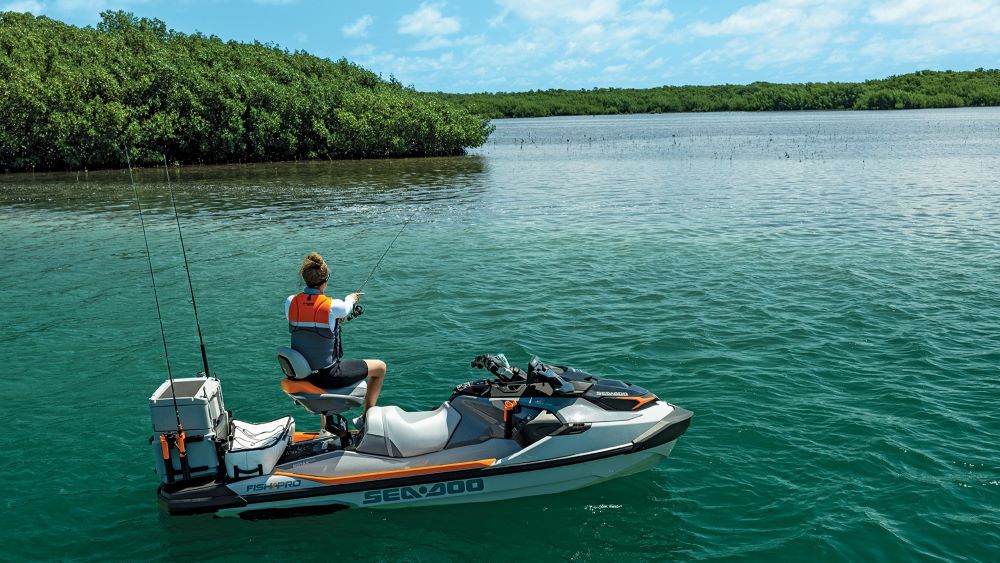
Powering PWCs in the future
Another space that both companies are investing in is sustainable power solutions. Electrification on the water is challenging given weight, range, and cost, so research is going into hydrogen power and sustainable fuels as well.
“Every company in every sector of transportation at this point is rethinking their electrification strategy,” Heintz said. “We’re starting to understand more and more about what’s possible with just the sheer engineering mathematics behind electrifying certain vehicles. The global trends around adoption of certain vehicles and what that actually requires in terms of infrastructure and usage has been a shifting landscape.”
While Can-Am released an electric ATV at Club BRP in August, that doesn’t mean an electric PWC is the next product release for the company. “When it makes sense and we can offer a product that will meet and exceed owner expectations, we will electrify our products,” Heintz said. “We don’t want to bring out products just because we can electrify them. They need to offer an experience that we deem acceptable and that will satisfy our customers.”
He referenced the NMMA and ICOMIA sustainability study. “One of the big takeaways from that study was that electrification is not necessarily the right choice for on-water products,” he continued. “Whether it be hybrid or sustainable fuels or hydrogen, we have to look at all of it. And our intention is to find the right recipe that meets our customers’ expectations on usage, autonomy, and price.”
The Yamaha Marine Business Unit has a number of active electrification initiatives, and while the company is studying how electric power might be used in the PWC segment, Yamaha is also looking at all possibilities.
“Down the road, we’re looking at any option,” Seti said. “I don’t think we’re married to anything at this point, and I don’t think there’s one solution that is really evident [for] personal watercraft in the short term.” Electric technology is not advanced enough to power the PWC segment today, according to Seti, and it may never be.
He shared that the sustainable solutions used in the future will be determined by customer expectations, also referencing sustainable fuels and hydrogen power as possibilities. “We’re always doing research to understand what our customers want and then delivering based on those needs,” he said.

Preparing for the next generation
OEMs may still be exploring which alternative power source will work best for PWCs, but it’s clear that future buyers will consider sustainability. And that generational shift is on its way.
“The target market is going to be shifting from Boomer to Millennial, which will have a unique aspect to it,” Heintz explained. “We’re going to have a new generation of customers focused on sustainability, they’re focused on experience rather than ownership, they’re focused on more technology than the previous generation. Technology, sustainability and enhancing that ability to have a diverse set of experiences will be something that we’ll have to watch as this new generation of buyers enters that target age of 45 to 50 over the next five years.”
Supporting dealer partners
As OEMs prepare for future buyers, they know their dealer partners are concentrating on present-day challenges, with Sea-Doo and Yamaha pointing to inventory management as a key concern.
“I think the number one challenge for those multiline dealers is inventory, staying profitable,” Heintz said. “For [BRP exclusive dealers], we’ll continue to support them with industry leading product and innovation, strong price positioning versus our competitors, as well as promotions to drive traffic into their dealerships. I think they’re looking to us to be more proactive in our marketing to get door swings going and be a strong partner after sales and service.”
Yamaha is also focused on inventory management and keeping its dealers healthy. “We know we’re a seasonal business, so every Winter, Spring and Summer, we’ve got to be at our dealerships making sure new staff understands our product,” Seti added.
Yamaha offers a technician program that provides hands on training, and over the next year, the company will be developing a Master Technician certification program for students.
“We’re also very aggressive in working with tech schools around the country,” Seti explained. “It’s a great opportunity for a young person to build a career, so we’re partnering with these schools and helping create curriculum for these students so they can have a great career in an industry that they’re going to love.”
Fueling industry growth
Just as OEMs work to bring in new, passionate employees, they also aim to attract new, enthusiastic riders. Both Sea-Doo and Yamaha emphasized the importance of gaining new customers and offering product lineups that support ongoing upgrades.
“People want something new, whether it’s new technology or a new product,” Seti said. “We need to do that and make the ownership experience easier. As an industry, we need more accessibility to the water, to launch ramps, to storage. We need to appeal to more people.”

“While everybody wants to win and we’re all competitive at heart, one of the biggest opportunities is to come together as an industry to grow awareness for our products,” Heintz added, emphasizing the diverse experiences entry-level, luxury and performance PWC models offer.
“We have to show them what’s possible on a watercraft,” he said. “We have to give them more reasons to go out on the water; show customers where they can ride, ease their ability to go out in groups, show them new destinations and points of interest they didn’t know existed before, and allow them to take their music, food and cooler. All these things will give them more reason to extend their day on the water and have more of those days during the riding season.”
Both Sea-Doo and Yamaha see PWCs as essential to the long-term health of the recreational boating industry. From affordability to luxury, from fishing to touring, the segment’s versatility positions it to meet the expectations of current riders, and to bring the next generation of riders to the water.




